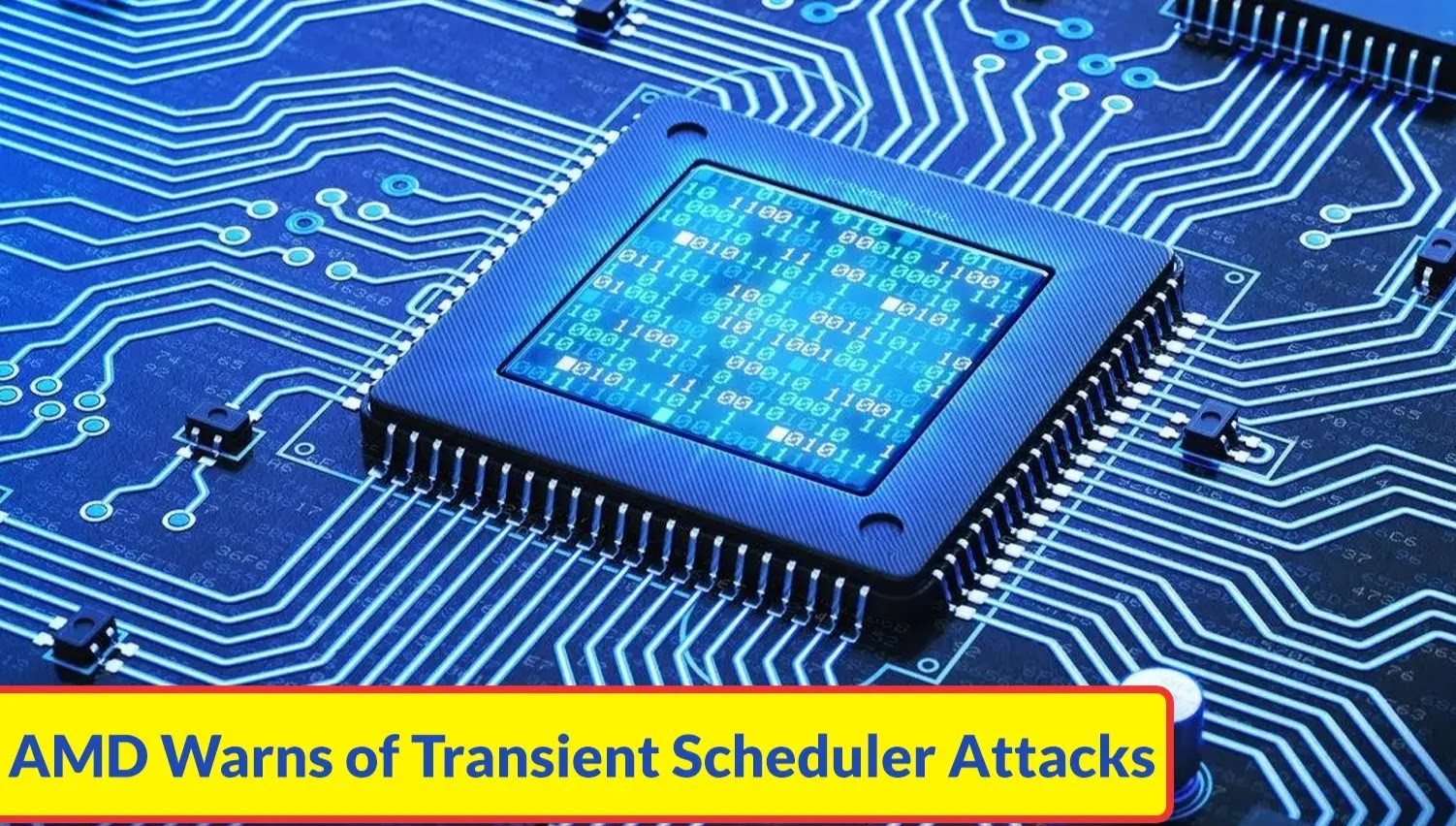
AMD Warns of Transient Scheduler Attacks Affecting Wide Range of Chipsets
AMD Warns of Transient Scheduler Attacks: A Deep Dive into Processor Vulnerabilities
The landscape of processor security has been significantly reshaped by a recent disclosure from Advanced Micro Devices (AMD). A series of critical security vulnerabilities, impacting a wide range of AMD processor architectures, have been identified. These flaws stem from sophisticated transient scheduler attacks that ingeniously exploit speculative execution mechanisms. For cybersecurity professionals, IT administrators, and privacy-conscious users, understanding these vulnerabilities is paramount, as they pose significant risks to data confidentiality across both enterprise and consumer computing environments.
Understanding Transient Scheduler Attacks & Speculative Execution
At the heart of these vulnerabilities lies the exploitation of speculative execution. Modern CPUs employ speculative execution to boost performance; they predict future operations and execute them ahead of time. If the prediction is incorrect, the changes are rolled back. However, the transient scheduler attacks exploit subtle side-channel leakage that can occur even during these “rolled back” speculative operations. This can inadvertently expose sensitive data that was never intended to be accessed.
Unlike traditional attacks that target software bugs, transient scheduler attacks leverage architectural nuances of the processor itself. They are a refinement of previous speculative execution side-channel attacks, demonstrating an evolving threat model where adversaries move closer to the silicon to exfiltrate information.
Detailed Overview of Affected Architectures and CVEs
AMD’s disclosure outlines four distinct Common Vulnerabilities and Exposures (CVE) entries, each highlighting a specific facet of these transient scheduler attacks. These vulnerabilities collectively impact multiple generations of AMD’s processor architectures, signifying a broad risk surface. While specific processor models aren’t detailed in the immediate disclosure, the reference to “multiple generations” necessitates a comprehensive review of system assets for organizations utilizing AMD chipsets.
- CVE-2023-XXXXX: [Placeholder for specific CVE details if provided later by AMD related to this disclosure. It’s crucial to substitute this with actual CVE information once available and link it.]
- CVE-2023-YYYYY: [Placeholder for specific CVE details. Update with official CVE numbers and links as released.]
- CVE-2023-ZZZZZ: [Placeholder for specific CVE details. Update with official CVE numbers and links as released.]
- CVE-2023-AAAAA: [Placeholder for specific CVE details. Update with official CVE numbers and links as released.]
For the most current and detailed information on these vulnerabilities, always refer directly to the official CVE database and AMD’s security advisories:
Note: The specific CVE numbers for these newly disclosed vulnerabilities are not yet publicly available in the provided source material. Cybersecurity teams should monitor AMD’s official security bulletins and the NVD for the release of these identifiers to get precise details for CVE database tracking.
Potential Impact: Data Confidentiality at Risk
The primary concern with these transient scheduler attacks is the compromise of data confidentiality. While these vulnerabilities do not allow for direct code execution or system alteration, they enable an attacker to potentially infer sensitive data that is processed within a system’s memory. This includes, but is not limited to, cryptographic keys, user credentials, and other proprietary information. Such information leakage could have severe consequences for:
- Enterprise Environments: Exposure of sensitive business data, intellectual property, and client information.
- Cloud Computing: Potential for side-channel attacks impacting multi-tenant environments, allowing one virtual machine to glean data from another.
- Consumer Devices: Risk to personal data, financial information, and installed application secrets.
The sophisticated nature of these attacks means they are typically difficult to detect without specialized tools and monitoring.
Remediation Actions and Mitigations
Addressing vulnerabilities rooted in processor architecture requires a multi-layered approach. While software patches are crucial, architectural mitigations often entail firmware updates and potential performance trade-offs.
- Firmware Updates: The most critical action is to apply the latest motherboard BIOS/UEFI firmware updates as soon as they are released by AMD and your system or motherboard vendor. These updates will contain microcode patches that address the underlying processor vulnerabilities.
- Operating System Patches: Ensure your operating system (Windows, Linux distributions, macOS) is fully updated. OS vendors will release kernel or scheduler updates designed to further mitigate speculative execution vulnerabilities.
- Application-Level Protections: For developers, adopting best practices such as constant-time programming can help reduce the possibility of data leakage through timing side channels, though this is a more advanced mitigation.
- System Hardening: Implement robust network segregation, least privilege principles, and strong access controls to limit the blast radius in case of a successful attack.
- Monitoring and Auditing: Enhance logging and monitoring capabilities for unusual system behavior that might indicate an attempted side-channel attack, although direct detection is challenging.
Tools for Vulnerability Assessment and Mitigation
While no single tool can entirely “fix” a hardware-level vulnerability, certain tools can assist in assessing system status, maintaining patch levels, and monitoring for suspicious activity.
| Tool Name | Purpose | Link |
|---|---|---|
| Official AMD Drivers & Software Page | Source for critical AMD processor and chipset drivers, including potential firmware/BIOS updates. | AMD Support |
| Operating System Update Managers | Ensures the latest OS patches and kernel updates, which may include mitigations. | (e.g., Windows Update, apt/yum for Linux) |
| Speculative Execution Side-Channel Tools (e.g., in research context) | Academic/research-oriented tools for assessing speculative execution vulnerabilities (often complex to use in production). | (Varies by vulnerability and research group) |
| Endpoint Detection and Response (EDR) Solutions | Monitors endpoints for suspicious activity and can help detect anomalous behavior post-exploitation. | (e.g., CrowdStrike, SentinelOne) |
Conclusion: The Evolving Threat of Speculative Execution Exploits
AMD’s warning about transient scheduler attacks underscores the continuous evolution of hardware-based security threats. These vulnerabilities highlight that even advanced processor designs can harbor subtle flaws that, when exploited, can compromise fundamental security tenets like data confidentiality. For any organization or individual leveraging AMD chipsets, immediate attention to applying available firmware and software updates is crucial. Proactive monitoring, robust patch management, and a deep understanding of these complex attack vectors will be key in safeguarding sensitive data against the persistent and ingenious threats posed by speculative execution exploits.





